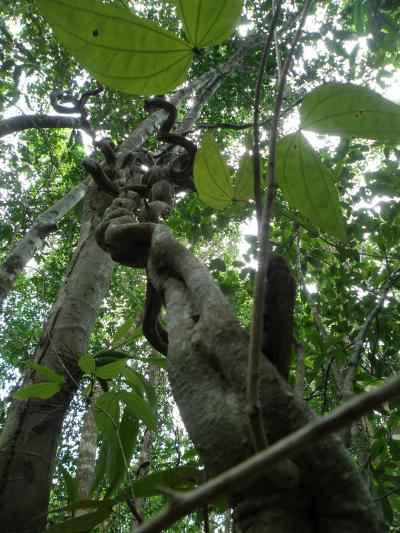Vines overtaking the American tropics
Contact: Beth King, kingb@si.edu, Smithsonian Tropical Research Institute
14 Feb 2011 Sleeping Beauty’s kingdom was overgrown by vines when she fell into a deep sleep. Researchers at the Smithsonian in Panama and the University of Wisconsin at Milwaukee received more than a million dollars from the U.S. National Science Foundation to discover why real vines are overtaking the American tropics. Data from eight sites show that vines are overgrowing trees in all cases. “We are witnessing a fundamental structural change in the physical make-up of forests that will have a profound impact on the animals, human communities and businesses that depend on them for their livelihoods,” said Stefan Schnitzer, research associate at the Smithsonian Tropical Research Institute in Panama and associate professor at the University of Wisconsin at Milwaukee. Tropical forests hold more than half of the Earth’s terrestrial species and much of the planet’s carbon. If vines take over tropical forests the rules used to model ecosystem services, such as regulation of the water cycle and carbon storage may no longer apply. “In 2002, Oliver Phillips, a professor at the University of Leeds in the U.K., published a controversial study claiming that vines were becoming more common in the Amazon,” said Schnitzer. “By pulling together data from eight different studies, we now have irrefutable evidence that vines are on the rise not only in the Amazon, but throughout the American tropics.” On Barro Colorado Island in Panama, the proportion of vines in tree crowns has more than doubled over the past 40 years. In French Guiana, liana vines increased 60 percent faster than trees from 1992 to 2002. Similar reports from Brazil, the Bolivian Amazon and subtropical forests in South Carolina in the United States confirm that vines are becoming more common and represent more of the total forest biomass. …

It's really simple. Trees are long-lived species that are being exposed to atmospheric pollution season after season, and so they are dying out faster than annuals.
Vines are younger and grow fast.
Never mind though – at the rate we are contaminating the air, they will die out too…as will everything that needs to photosynthesize.
Oh, and everything else that is higher on the food chain than plants…oops…that's us.